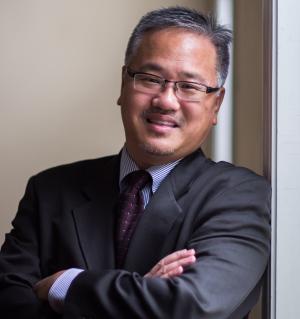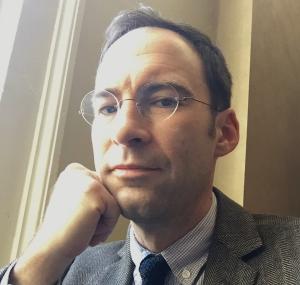Resources

I’ve been doing some nonfiction creative writing recently (you can see my latest piece here, if you’d like). And it’s been an interesting exercise in curation, a term most closely associated with the world of art history, but now used all over the place. When writing about a real life, you have so many precious details, nuances, characters, memories—and you have to carefully select, and then organize, which of those are most important, which will then be preserved in the (perhaps someday published) story you aim to tell. Of course, we curate all the time, not just in art galleries or storytelling. What do we take care of? What do we retain or prioritize or foreground? What do we exclude? What are we missing? When someone asks us how we are doing, so often we simply default to saying, “Great, and you?” regardless of whether this is actually how we feel. We curate what news we consume, what friends we spend time with, what food we put in our bodies. We curate in partnerships and parenting. We curate at work. And we curate in our teaching. Think about which parts of yourself you disclose to your students. Think about what activities and assignments you make space for on the schedule and which you don’t. Think about what concepts or skills you think the students can handle, or need, to learn at any given moment in a course, and which will have to be saved for another time. This is all a form of curation, I would argue. I often say that a syllabus is more about what doesn’t make it in than what does. Especially in introductory religion courses—we have to leave out so much! (And, of course, with the material that does make the cut, like a curator at a museum, we have to think how to structure that material into the “narrative arc” of a course—a concept I, as a writer, love.) We only have so much time and energy. We can’t do it all, folks. There are all sorts of criteria for curation in the classroom—our areas of expertise, our personal interests, the course’s learning objectives, the level of the students, the institutional mission—but those aren’t my focus here. What I want to muse on is the dark side of curation, which I think social media aptly represents. (This is one of the main reasons I stopped using social media over a decade ago.) Curated content can give a false, and unattainable, impression of perfection. (How often do we feel badly about our own lives when we see the seemingly flawless lives depicted on others’ Facebook or Instagram accounts?) Curation can elide or obscure process. (How many photos did it actually take to capture that one where the whole family was smiling?) Curation can seem to emphasize singularity or definitiveness, over nuance, messiness, options, multiplicity. Curation can make matters appear finished or settled or completed. Curation can feel closed. I imagine these impressions can have some negative effects on students. Perhaps, when we cut out debate or history or context—that is, the messiness, the details—students are left with problematic notions about the study of religion (e.g., that there is a singular definition of the term) or specific religions (e.g., that Hinduism is all about karma and dharma). Perhaps students wind up not understanding the extensive, nonlinear, trial-and-error process that’s required to acquire important knowledge or skills in our field. Perhaps they feel ashamed if they don’t understand the reading for the week or if they bomb the only test. Perhaps they look at the example essay and think, “Maybe this whole college thing isn’t for me.” Curation is necessary, common, and often beautiful—but it can carry some risks. How might we dodge these downsides in our teaching? Here are some strategies I’ve tried, to pull back the curtain a bit for students, while accepting that I must inevitably curate the learning environment and experience to some extent. For starters, I sometimes talk about how I went about creating the syllabus and how (and why) I decided what to include and what to leave off. Or I mention what I’ve done in past courses and why I’ve changed my approach. I point out mistakes or typos in the printed works we read. I show students drafts of my own articles and (often quite critical) peer-review comments, as I’ve mentioned in this blog before. When I want to provide a model for a particular assignment, I try to give multiple examples (rather than one, which they may then feel pressured to simply emulate) and/or annotate the example(s) with both strengths as well as areas of improvement. I assign authors or speakers with different, sometimes totally oppositional, viewpoints, so students understand that there isn’t a single correct view to hold on any given topic. I provide examples of the differences between the aspirational, ideal, “authoritative,” or textbook version of a religion and the various ways that real people are going about, living their lives, around the globe and at different times. If we don’t have time to get into the depth or nuance of a particular topic, I still make a point to underscore, repeatedly, the complexity. I admit to some of my own struggles with the readings or tough topics. I tell them about my own undergrad experiences. I say when I don’t know. We talk about what’s happening around campus, in town, or around the world, and how appearances can differ from reality. How do you experience the concept of curation in your own teaching? And what are some ways you can retain the benefits and beauty of curation, while also avoiding its pitfalls?

I titled this post after Trevor Noah’s introduction to the Black Panther film at the 2019 Oscars when he cited the Xhosa proverb, “Abelungu abazi uba ndiyaxoka.” Trevor translated it to mean: “'In times like these, we are stronger when we fight together than when we try to fight apart.” It turns out the proverb was an inside joke among South Africans who knew that he really said was, “White people don’t know I’m lying.” Ha! He got me, even though I’m of Korean descent. Nevertheless I still like the mock translation and the concept behind it. It is better to fight together. Some courses are a real challenge, and study groups are a strategic way for students to succeed. Here are some ways I think they make a difference in online education and some suggested practices. 1. Set up open virtual study hall hours online Many learning management systems (LMS) like Canvas integrate Zoom, Big Blue Button, or other video conferencing tools that allow instructors to create virtual rooms which are open 24/7. At any given hour during the day, a student can log into a room online and meet fellow classmates in a virtual study hall to collaborate on homework, prepare for quizzes, exchange notes, and discuss any aspect of the course. Even if one’s LMS does not include video conferencing as part of its platform, instructors can have students form their own Facebook or Google groups. The first step is to provide the virtual space for study groups to meet. Second is to help students organize. The easiest way is to coordinate groups based in the same time zones. It takes a bit of work, but using scheduling tools like Doodle can help manage competing calendars so everyone eventually finds common times to work together. 2. Assign group presentations where students collaborate and teach one another There is no faster way to have students learn from one another than to assign a presentation by small groups. In my New Testament courses, I often schedule student presentations on diverse topics on a weekly or bi-weekly basis. I put a sign-up sheet online using the discussion forums and lay out guidelines for the presentation in the syllabus. A week or two before a group presents, I meet with them through video conferencing, coach them on the topic, suggest readings, and ask them to meet on their own using the virtual study hall rooms. The presentations usually last about 8-10 minutes. Students use PowerPoint or Google Slides to video record their presentations using the tools provided by their LMS or with third-party programs like Screencast-O-Matic, and upload their video presentation onto the discussion forum for the class to watch. The rest of the class comments on the presentation by posting replies. Alternatively, if the course is synchronous, the group live-streams their presentation when we meet online. 3. Scaffold research projects and have students review one another’s work Especially with final research papers, I often “scaffold” the assignment by breaking up the paper into different parts and spread the due dates across the semester. I ask students to choose a paper topic, submit an initial bibliography, read the secondary literature and outline key points of debate, and step-by-step work on major sections of their paper until these sections are ready to be compiled together into a cohesive whole. Along the way, in small groups, students are asked to review one another’s work and receive suggestions for improvement. Peer suggestions cannot replace the feedback given by the instructor of the course, but I often find they offer a friendlier and easier way to receive critique. 4. Leave room for the random lone ranger and alternative assignments On occasion, a student might have such an unusual schedule that meeting together to do student-to-student collaborations is simply not possible. Such situations do not happen often, but when they do, I try to provide a fair alternative. I might, for example, ask a student to submit a short paper instead of working with other classmates on a video presentation. Whatever the substitute assignment, it’s important to be flexible. Successful student-to-student interaction requires that I take on a role other than “teacher.” The students teach themselves and one another. I plan, coordinate, and set up ideal virtual spaces for students to meet. Along the way, I learn from my students as well.

This blog builds on Caleb Elfenbein’s excellent post in this series “Scaffolding Theory at the Introductory Level.” I want to think about two interconnected issues in relation to engaging theoretical discussions in the study of Religion and the Humanities in an introductory course on Islam: 1) cultivating a practice of thinking critically about key categories like tradition, modernity, secularism etc. and 2) disrupting conventional binaries (like tradition/modernity, religion/secular) through which such categories are popularly approached. Perhaps the most difficult pedagogical task awaiting courses on religion and Islam is that of unsettling certain ingrained assumptions and attitudes that students bring to particular concepts. While dismantling common stereotypes about Islam to do with violence, patriarchy, and political repression is still reasonably doable, much harder is the task of disturbing entrenched assumptions about the presumed goodness of say modernity, secularism, pluralism and liberal democracy. This is a problem I struggle with in all my classes, not least the introductory course on Islam; in this and the next few blogs I hope to reflect on this struggle in hopefully productive ways. So what could be some effective ways to share with students in an introductory course on Islam conceptual arguments that by now are taken as established positions in Religion Studies: for instance, tradition is not the opposite of modernity, religion is not the inverse of the secular etc. Put differently, how to do theory (or conceptual interrogation) without necessarily mentioning the theorists or having undergrads suffer through theory talk? Let me share some experiences/strategies on this front from my Islam course with corresponding commentary on potential benefits and persistent obstacles. In this post, I want to focus on the first day of the semester in which an assigned reading is discussed. The task I set for this day is the interrogation of the concept of religion. I begin all my courses with chapter two of Carl Ernst’s Following Muhammad: Rethinking Islam in the Contemporary World “Approaching Islam in Terms of Religion.” This chapter charts in an eminently lucid manner major conceptual and political transformations in the category of religion over time. By comparing the understanding of religion espoused by pre-modern thinkers like Cicero (d. 43 BC) and St. Augustine (d. 430) with that of the 17th-century Dutch jurist Hugo Grotius (d. 1645), Ernst highlights profound ruptures in the early modern and modern career of religion. An earlier notion of religion, as for instance articulated by Augustine in his text Of True Religion centered as the cultivation of virtue through repetitive practice. In contrast, the modern concept of religion was marked by intensified competition over the question of authenticity (as found in Grotius’s text On the Truth of the Christian Religion). Moreover, Ernst shows that this modern competitive notion of religion was shaped in large measure by the power and politics of colonialism coupled with the activities of European missionaries who in fact used Grotius’s text as a debating manual. What I find remarkable about this text is the way it presents in simple language the key features of the world religions argument that has occupied so much of the often-dense theoretical landscape of Religious Studies. I ask students (in small group discussions) to identify and list by thinker key differences between pre-modern and modern conceptions of religion, best encapsulated in the shift from “religion” as embodied practice to “religions” as exclusive clubs reducible to distinct scriptures and competing truth claims. We also spend considerable time discussing the intimacy of a modern competitive understanding of religion and the emergence of the modern state. Particularly effective in this regard is to complement this chapter with a sample of the British census survey in late 19th century India. It is through this visually charged primary source that students really get the tectonic implications of being compelled to box one’s religious identity into one among several competing options. Also invaluable is the narrative in this chapter involving a student at the American University of Beirut who when asked to identify his religious identity in university registration forms, responds in puzzlement “But I am an atheist?” To which the registrar responds, “but are you a Christian atheist, a Jewish atheist, or a Muslim atheist.” (p. 58). This story (that we read aloud in class) brings home for students the point about a modern countable and competitive notion of religion with particularly clarity. But while students generally get the idea that meanings attached to categories like religion shift over time, they struggle to dismantle a celebratory attitude towards modernity and modern pluralism. In the Religion to Religions argument, while recognizing the problem of religions as competitive clubs, students tend to persist with the idea that having multiple religions is an achievement of pluralism in modernity. That the discourse of pluralism is itself stained with the violence of colonialism and modern state power is a point they are not quite ready to entertain. Particularly instructive in this regard is the critical attitude students often adopt towards Augustine on why his text was titled “of True Religion.” They often protest: why did Augustine not recognize (read respect) religions other than Christianity (the True Religion). The tenor of this discomfort says much about the deep internalization of liberal gestures of recognition and respect among undergrads. But despite all this, what Ernst’s chapter and starting a course with this chapter does achieve is the attunement of students to the labor of taking seriously the histories and ideological arguments invested in crucial categories of life like religion. But how can one sustain such a genealogically oriented pedagogy in discussions on more specific topics in Islam? That is what I hope to discuss in my next post on November 9th.

Caleb Elfenbein Assistant Professor Grinnell College More often than not, it seems, students register for courses on Islam wanting to learn “stuff.” In a moment when the ubiquity of Islam in public consciousness is matched by general illiteracy about its history and diverse forms, these expectations are tempting. Yet if.